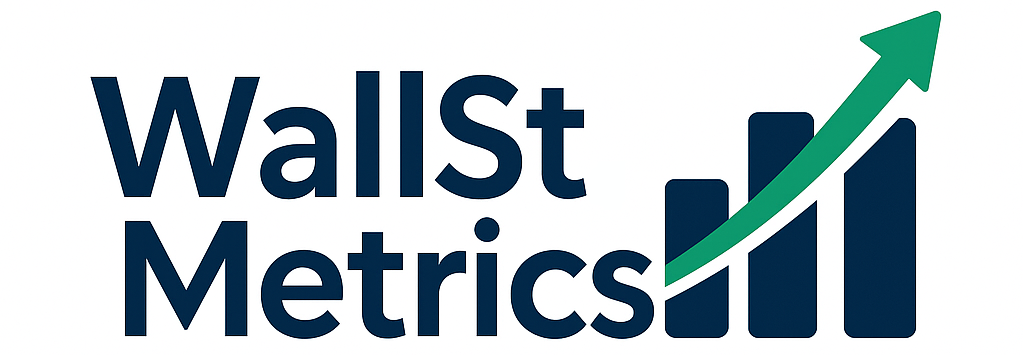Key Takeaways
- Understanding daily S&P 500 charts helps you spot market trends and key levels.
- Key indicators like moving averages and volume provide essential trading signals.
- Reading charts empowers smarter, more confident investment decisions.
Want to Read the Market Like a Pro? Start with the S&P 500 Daily Chart
Ever looked at a stock chart and thought, “What on earth am I looking at?” Don’t worry — you’re definitely not alone. All those colorful lines, candles, and weird abbreviations can feel totally overwhelming at first. But here’s the good news: reading a daily chart of the S&P 500 isn’t as complicated as it seems — and it’s actually one of the smartest habits you can pick up as an investor.
The S&P 500 is like the heartbeat of the stock market. By checking out its daily chart, you can start to see where the market’s heading, spot trends, and get a feel for when big moves might be coming. You don’t need fancy tools or hours of research — just a few minutes a day can help you start recognizing important patterns and price levels. It’s a simple way to boost your confidence, cut through the noise, and make better decisions with your money.
So if you’ve been curious about what all those charts mean, now’s the perfect time to dive in. It’s easier than you think — and way more useful than you’d expect.
Start with the Basics: What Are You Looking At?
Before you jump into analyzing trends or spotting trade signals, it’s important to understand what you’re actually seeing on the chart. Think of it like learning to read a map — once you know what each element represents, everything starts to make sense.
Here’s a quick breakdown of the key parts of a daily S&P 500 chart:
Price Candlesticks: These are the stars of the show. Each candlestick represents a single trading day and tells you four important things: where the index opened, the highest and lowest points it reached that day, and where it closed. If the candle is green (or hollow), the day ended higher than it started — that’s bullish. If it’s red (or filled), the index closed lower — that’s bearish. Over time, these candles form patterns that can hint at what the market might do next.
Volume Bars: Sitting below the candlesticks, volume bars show how many shares or contracts were traded during the day. High volume often confirms the strength of a price move — it means a lot of people were active at that level. Low volume? That could signal hesitation or lack of conviction in the current trend.
Time Axis (X-Axis): This runs along the bottom of the chart and marks the passage of time. On a daily chart, each tick on this axis usually represents one trading day. You can scroll back to view how the market performed days, weeks, or even months ago — helpful for spotting longer-term trends.
Price Axis (Y-Axis): Running along the right side, this vertical scale shows the actual value of the S&P 500 index in points. This is what you’re tracking — whether the market is heading higher or pulling back. Watching how the candles move up or down this axis over time gives you a visual sense of momentum and direction.
Once you’re familiar with these four components, the chart stops feeling like a mystery and starts becoming a story — a visual narrative of what the market is doing and how investors are reacting. It’s your window into the pulse of the market.
Zoom In: Key Patterns and Signals to Watch
Once you’re comfortable with the basic elements of a daily chart, it’s time to zoom in and start interpreting what those shapes and movements really mean. This is where things get interesting — because now you’re not just looking at data, you’re reading the market’s mood.
Here are some of the most important patterns and signals to keep an eye on:
Support and Resistance: The Market’s Invisible Boundaries
Support is like the floor of the market — a price level where the S&P 500 tends to stop falling and start rising again. It’s a zone where buyers typically step in, thinking the index is now “cheap enough” to buy. When you see the price touch a level multiple times and bounce upward, that’s likely a strong support area.
Resistance is the opposite — more like a ceiling. It’s a price level where the index struggles to rise above, often because sellers come in thinking it’s time to lock in profits. When the market hits this level and retreats repeatedly, you’ve spotted resistance.
Watching how the price behaves around support and resistance levels can help you anticipate possible breakouts or reversals — a crucial skill for timing entries and exits.
Trendlines: Connecting the Dots for a Clearer Picture
Trendlines are diagonal lines that connect a series of higher lows in an uptrend or lower highs in a downtrend. Think of them as a visual guide to the market’s direction. A rising trendline signals consistent upward momentum, while a downward one shows sustained selling pressure.
If the price breaks above or below a well-established trendline, it could signal a shift in momentum — something worth paying attention to.
Chart Patterns: The Market’s Body Language
Certain shapes formed by price action can tell you a lot about where the market might go next. These are known as chart patterns, and they’re a favorite tool among technical traders:
Double Tops and Double Bottoms: These patterns often signal reversals. A double top looks like the letter “M” and suggests the market is hitting resistance. A double bottom looks like a “W” and may indicate strong support.
Flags and Pennants: These small consolidations within a trend often signal a pause before the trend resumes. Traders watch for a breakout in the same direction.
Triangles: Whether ascending, descending, or symmetrical, triangles indicate tightening price action and often lead to a strong breakout once the pattern resolves.
Learning to recognize these shapes can give you early warning signs of potential moves.
Gaps: The Market’s Sudden Jumps
Gaps happen when the price “jumps” up or down from one day to the next without trading in between — often due to overnight news or earnings. These gaps can signal strong momentum or an overreaction:
Breakaway Gaps usually start new trends.
Exhaustion Gaps might suggest a trend is running out of steam.
Watching how the market behaves after a gap — does it fill the gap or continue in the same direction? — can tell you a lot about investor sentiment.
Daily Candlestick Clues: Tiny but Powerful
Every single candlestick on the chart is packed with insight. Here’s what to look for:
Green/White Candles: These show that the market closed higher than it opened — a bullish signal.
Red/Black Candles: These mean the market closed lower — a bearish sign.
Long Upper or Lower Wicks: These thin lines above or below the candle body show how far the price moved before snapping back. Long wicks can indicate market indecision or potential reversals.
A cluster of bullish candles near support? That’s encouraging. A series of bearish candles near resistance? Caution may be warranted. Candlestick formations like doji, hammers, or engulfing patterns can offer even more nuance once you’re ready for deeper analysis.
Together, these patterns and signals form the language of the market. The more time you spend studying them, the more fluent you become — and the more confident you’ll feel making decisions based on what the chart is actually telling you.
Follow the Indicators: Moving Averages and Momentum
Sometimes charts can get messy — there’s a lot going on, and it’s hard to tell what really matters. That’s where technical indicators come in. Think of them as highlighters for your chart — they help you cut through the noise and see the bigger picture. Indicators are especially useful when price action seems unclear or choppy, giving you extra confirmation before making a move.
Here are a few of the most popular and useful indicators to watch on a daily S&P 500 chart:
Moving Averages (20-Day and 50-Day)
Moving averages (MAs) are like trend-spotting tools. Instead of looking at individual daily price swings, they show you the average price over a set number of days — helping you identify the market’s direction more clearly.
The 20-day moving average focuses on the short-term trend, often used by traders looking for quicker entries or exits.
The 50-day moving average gives a broader view of the medium-term trend and is widely followed by investors and institutions alike.
When the price is above these moving averages, it typically signals bullish momentum — the market is in an uptrend. When the price is below, it can suggest bearish sentiment or a potential correction. If the two MAs cross (for example, the 20-day crossing below the 50-day), that’s known as a moving average crossover — and it can be a strong signal of a trend change.
Relative Strength Index (RSI)
RSI is a momentum indicator — it tells you whether the market might be overbought or oversold. It’s measured on a scale from 0 to 100:
An RSI above 70 suggests the market may be overbought — prices have risen quickly, and a pullback could be coming.
An RSI below 30 suggests the market may be oversold — prices have dropped fast, and a bounce might be on the horizon.
The RSI doesn’t tell you exactly when to buy or sell, but it does give helpful clues about whether the current trend has room to run or is getting tired.
Bollinger Bands
Bollinger Bands are all about volatility — how much the market is moving day to day. They consist of three lines:
A middle band (usually a 20-day moving average)
An upper band (set a certain distance above the average)
A lower band (set the same distance below)
Here’s what to watch:
When the bands are tight and close together, it usually means the market is quiet and consolidating. This often leads to a breakout — you just don’t know which direction yet.
When the bands widen, it means volatility is picking up. Big moves are happening — or about to happen.
A price move that touches or crosses outside the bands can be a signal of extreme conditions — and possibly a short-term reversal or continuation, depending on other context.
Putting It All Together
Indicators aren’t magic. But when you combine them with chart patterns, trendlines, and support/resistance zones, they become powerful tools for spotting opportunities and avoiding false signals. Think of them as a second opinion — the market’s way of confirming what your eyes are already seeing.
Would you like an illustrated example of these indicators on a real S&P 500 chart? I’d be happy to help build one!
Volume Speaks Louder Than Words
Price movements are important — but they don’t tell the whole story on their own. To really understand what’s going on behind the scenes, you need to pay attention to volume. On a daily chart, volume shows you how many shares or contracts were traded during the day. In other words, it reveals the strength and conviction behind a price move.
Think of volume as the “voice” of the market. A big price jump might look impressive, but without strong volume, it could just be noise. On the flip side, a smaller move with unusually high volume might be the start of something meaningful.
Here’s how to read volume like a pro:
Rising price + rising volume = Strong trend
When the index is climbing and volume is increasing, that’s a bullish signal. It shows that more traders are buying in, supporting the move. The crowd is getting behind the trend, adding momentum and credibility.Falling price + low volume = Weak or questionable move
If the index is dropping but there’s barely any trading activity, the move may not be sustainable. It might just be a temporary dip or minor profit-taking, not a major shift in direction.Volume spikes = Pay attention!
Sudden surges in volume often happen before or during breakouts (when the index pushes past a resistance level) or reversals (when the trend changes direction). These spikes signal that something important is happening — and that a large number of participants are getting involved. It could be in reaction to news, earnings, or simply a key technical level being tested.
Watching volume alongside price action helps confirm whether what you’re seeing on the chart is backed by real market interest — or just a short-lived blip. So don’t ignore those volume bars at the bottom of your chart. They might be quiet, but they say a lot.
FAQs: Your Quick Chart-Reading Questions Answered
Q: Is reading charts better than watching the news?
A: Charts give real-time, unbiased data. News is often late or reactive.
Q: How often should I check the daily S&P 500 chart?
A: Once a day is enough for most investors — just before or after market close.
Q: Can beginners really learn to read charts effectively?
A: Absolutely. Start with the basics, focus on trends and levels, and practice daily.
Mastering the Chart Is the First Step to Mastering the Market
If you want to navigate the stock market with confidence, mastering the daily chart of the S&P 500 is one of the smartest places to start. This isn’t just about recognizing patterns or drawing trendlines — it’s about learning how to read the market’s language. Every candlestick, every support level, every indicator tells a part of the story. And once you know how to read that story, you’re no longer guessing — you’re making informed, strategic decisions.
By developing this skill, you give yourself a real edge. You’ll be able to time your entries and exits more effectively, avoid emotional decisions, and spot opportunities others might miss. You’ll start to see not just what the market is doing, but why it might be doing it — and what could happen next.
The best part? It doesn’t take hours a day or an advanced finance degree. Just a few focused minutes each day, spent observing and learning, can sharpen your instincts and build your trading or investing discipline. Start with the basics. Stick with it. Over time, the chart becomes less of a mystery and more of a guide — a trusted tool to help you protect your capital, grow your portfolio, and act with purpose instead of panic.
So the next time you open a chart, don’t just look at the lines and candles. Listen to what the market is trying to tell you.
The Bottom Line
Learning to read a daily S&P 500 chart is one of the simplest and most powerful ways to get in sync with the market. It helps you track momentum, identify critical price levels, and spot opportunities with more clarity — all in just a few minutes a day.
Whether you’re a beginner or a seasoned investor, this habit builds the foundation for smarter, calmer, and more confident decisions in any market condition.








